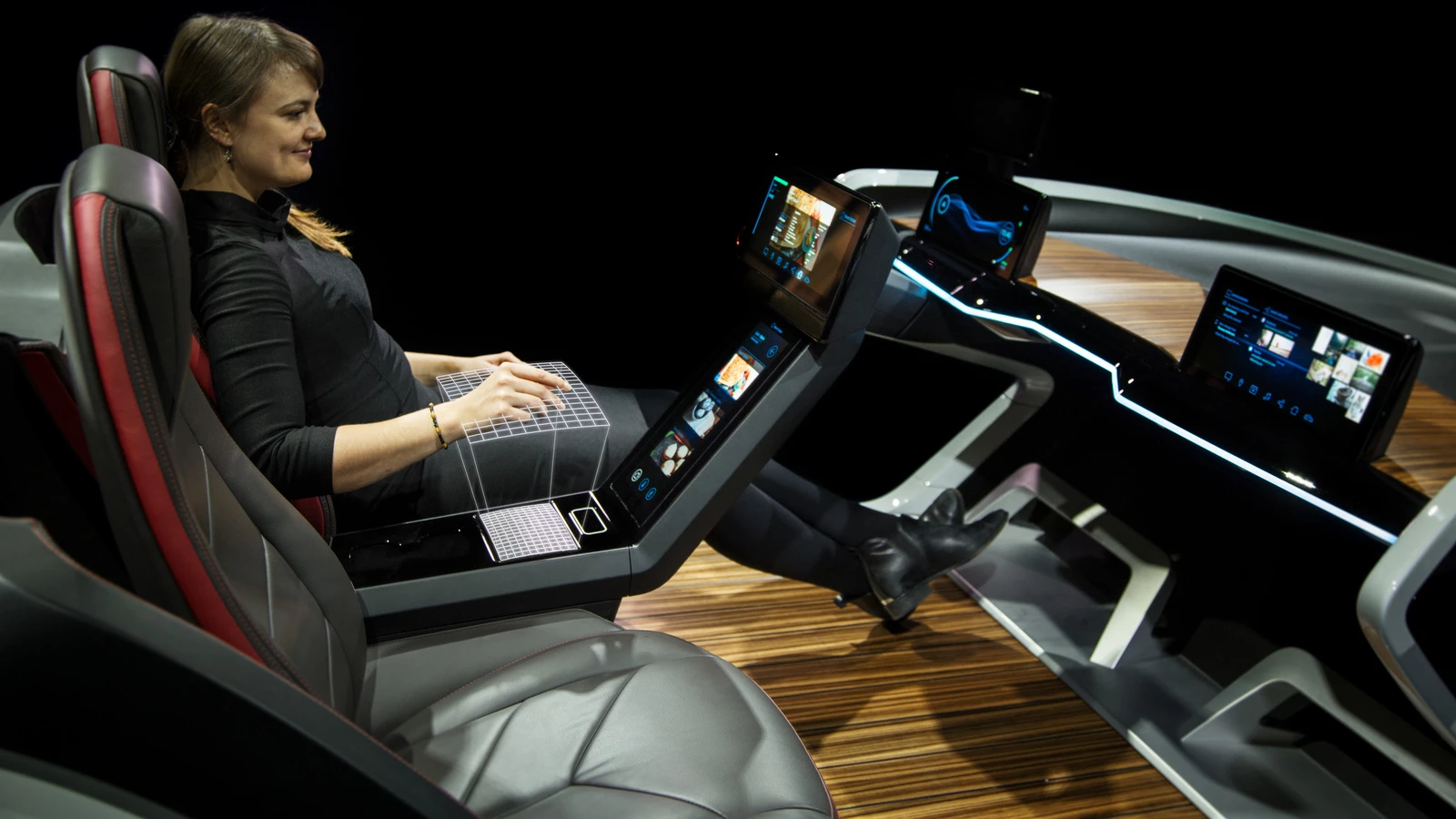At CES 2016, Bosch created a digitized car cockpit concept like no other, surrounding the driver in an explosion of screens. This year's concept builds on that design with a similar multi-screen array and even more tech. The "driver" enjoys facial recognition-based personalization, OLED display technology and gesture control.
Bosch's new concept is a bit more classic and less flamboyant than last year's. It loses the EDAG Light Cocoon convertible base for a sculptural design with wooden trim all over the open interior. The digital displays are arranged more three-dimensionally this time around, with a central widescreen topping the hovering digital console and a dash-mounted widescreen in front of each seat.
The displays use OLED technology, creating sharp, easy-read graphics. Left and right screens out at the A pillars replace the traditional side-view mirrors and are fed by a video camera system. The system can be adjusted based upon driving situation, showing a narrow rear view during highway driving or a broader view when in the city.
Facial recognition technology is something other automotive companies like Chrysler are experimenting with at CES, and Bosch uses it much the same way, albeit solely for the driver. After the driver monitor camera identifies the driver, the car automatically adjusts the steering wheel, mirrors, interior temperature and radio station to his or her preferred settings. That same camera monitors the driver for alertness during the ride, and the car issues alerts if it determines the driver is showing signs of drowsiness.
Like last year's Bosch interior, the new model highlights haptic touchscreen feedback. The technology gives the infotainment screen the feel of physical buttons, allowing the driver to operate it more easily without looking (kinda makes you wonder why auto companies have been so intent on replacing hard controls with touchscreens in the first place). Bosch says that the technology has made major strides toward production readiness since last year. Tactile feedback is also used for the gesture control system.

This particular concept car won't be rolling anywhere, but Bosch uses it as a jumping off point to talk about its community parking system. Using ultrasonic sensors, the Bosch connected car identifies open parking spaces when driving through a city center, uploading the data to a digital street map, where Bosch algorithms use the data to create a parking map. Other cars in the area can then refer to that map in the search for parking spots. Bosch is already testing this parking system in Germany and plans to add US pilot projects later this year.
The new Bosch concept is one of many interesting auto concepts on display at this year's CES, which runs through Sunday.
Source: Bosch






